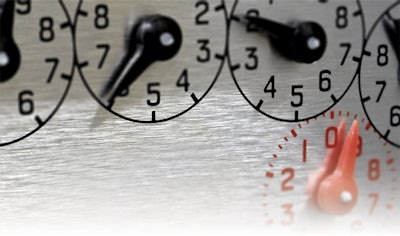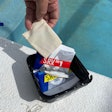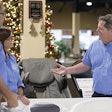
When I first entered the swimming pool industry in 1982 as a service tech, I had no way of knowing how far the industry would come. At that time I was more than happy to make money changing out pool pumps.
Looking back, I remember thinking how fast the pool equipment industry was changing, but little did I know back then that progress was going to move much faster and on a much larger scope in the years to come.
Since that time more than 32 years ago, the swimming pool industry has redefined the meaning of energy efficient pool pumps. The introduction of variable-speed technology in the pool market and the aggressive shift in energy efficient compliance and regulations have created the perfect opportunity for pool builders and service/repair technicians nationwide.
At both state and federal levels, the understanding of how the swimming pool’s power consumption affects the power grid is clear: Upgrade to energy efficient technology, and we can significantly reduce the power required to keep pool water clear and clean.
THE RIGHT QUESTIONS
The majority of the shifts in regulation and compliance in the swimming pool industry recommend upgrading pool and spa components and design to increase efficiencies. The APSP/ANSI/ICC 15 standard for energy efficient swimming pool design and California’s CEC Title 20 and 24 codes are leading the way by giving pool builders, repairman and building inspectors clear direction on how to achieve this.
The EPA’s adoption of swimming pool pumps in the Energy Star Program further supports this effort. It’s an especially encouraging development, since a highly recognizable and respected brand like Energy Star makes for a great talking point with potential customers, leading to new business and, of course, a path to cost savings for homeowners.
In addition, many local power utility companies provide dealer and consumer rebates when installing pool pump products with the Energy Star certification. And now, for the first time, robotic pool cleaners are being brought into the mix to qualify for power utility company rebates. Finally, the APSP Energy Coalition is leading efforts that will likely change federal codes to include tax credits for energy-efficient swimming pool upgrades.
When you combine the shift in energy efficiency regulations, the Energy Star pool pump program and potential tax credits to the fact that the U.S. economy is experiencing a rebound, it’s high time we should be asking ourselves a couple important questions:
1. How do we successfully upsell our customer to energy-efficient products on new construction and aftermarket pools, spas and water features?
2. How can we perform a quick energy-efficiency audit that will enable us to identify the best opportunities to upgrade systems and give the consumers the best return on investment?
Let’s start by defining the types of efficiency with the potential to improve.
TYPES OF EFFICIENCY
For the purposes of this discussion, we’ll define this process as conducting a quick energy efficiency pool audit (EEPA).
In evaluating a swimming pool, spa or water feature for efficiency, we need to look at the complete system to determine the proper balance between saving energy versus circulation, filtration and cleaning efficiency. It’s important to think in terms of never sacrificing one in favor of another. Remember: Our goal as swimming pool professionals is to provide a clean, healthy environment for consumers and their families to enjoy a swimming pool, spa or water feature. As such, healthy, clean, properly sanitized pools should always come before energy efficiency.
The good news is that if a pool is designed (new construction) or retrofitted (upgraded) properly, it will be surprisingly easy to achieve both. So let’s connect those dots, keeping the entire system in mind at all times.
The types of efficiency we will be reviewing can be put into a few broad buckets:
• Hydraulic circulation system efficiency
• Energy efficiency, reducing power consumption
• Efficiency utilizing automation and other higher-efficiency equipment in order to improve overall efficiency and reduced power consumption.
It’s important to note that filtration and cleaning efficiency are also a large part of the equation. At some point in the future I will follow up with a discussion about those topics as well.
A key point to note about increasing overall pool efficiency is, if done properly, it will translate to a measurable energy savings to the consumer. All pool components and the hydraulic design should be used to calculate specific energy savings of the total system.
The power-consuming components, such as pumps, lights and heaters, will be the easiest to measure because they are typically metered. Filtration, sanitizers, pool covers and circulation systems components are harder to measure but will have a significant indirect impact on the power required to operate the pool. Due to regional and weather pattern differences, every job should be evaluated on a case-by-case basis to ensure energy savings can be achieved.
Now, having determined the types of efficiency, let’s talk about the impact of those changes that can be put into play for both new construction and retrofit. All the content that follows is in alignment with the APSP/ICC/ANSI 15 Efficiency Standard for Swimming Pools & Spas and supports the general efforts that the EPA is initiating with respect to bringing Energy Star ratings into the swimming pool industry.
HYDRAULICS 101
It stands to reason that having a clear understanding of the pool/spa vessel capacity in conjunction with fundament fluid mechanic principles is at the heart of designing an efficient new hydraulic system or evaluating an existing hydraulic system.
• Always start by calculating the pool capacity and required turnover (Flow rate = pool volume /turnover rate hours) / 60 minutes). Look to state or local codes for turnover rate requirements. If none exists, use APSP-15.
• If you’re working with a new pool, size the plumbing lines at 6 feet per second on the suction side and 8 feet per second for the discharge plumbing (per APSP/ANSI/ICC15); that is, unless state or local codes supersede this requirement. Your overall goal should be to achieve low line velocities. The rule of thumb is that increasing water velocity in a fixed sized pipe will increase total dynamic head (TDH) by roughly three to four times when you double the flow rate. The increase in TDH is directly related to an increase in power consumption. The circulation/filtration pump should operate at the lowest possible TDH the design will allow. The two examples below illustrate that power savings on both single and variable speed pumps is possible.
A single-speed pump produces 80 GPM at 60 TDH. Running eight hours daily, it costs an estimated $635 per year. A lower hp single-speed pump producing 80 GPM at 35 TDH, for the same eight hours will cost around $380 annually. This cut in energy consumption occurs by dropping the pump size in horsepower and operating the lower hp pump toward the leading edge of its pump curve, where the pump’s energy factor is high.
The savings are even more dramatic with variable- and multi-speed technology. Operating the variable speed pump at lower motor shaft RPM allows you to take advantage of the “affinity law.” It states that the power consumed by a pump’s variable speed motor drops at a non-linear rate when the pump’s speed and flow are reduced. When the pump’s speed is cut in half (from 3450 RPM to 1725 RPM), the flow is reduced by 50 percent — but at roughly 1/8th the power.
Both of these examples give you the ability to reduce power consumption by operating the pump at lower flow and TDH levels. The rule of thumb: “lower TDH” for filtration/circulation systems is always a winner.
• For a retrofit: Use a vacuum and pressure gauge to determine system TDH. (Total TDH = (PSI x 2.31) + (HG x 1.13). The TDH also allows you to find flow on a pump curve — another piece of information we will use as well.
• For all pools: All equipment and components should be designed with both flow and pressure requirements. In many cases, the pressure may be very low, but it’s still required. Examples include spa jets, fountain heads, in-floor cleaning and solar heating — all applications that require higher amounts of pressure. On the opposite side of the spectrum, skimmers, waterfalls (such as grottos), pool slides and spillovers typically have lower pressure requirements.
It’s important to note that you always want to get specifications from the manufacturers, as they will all vary. Point being, know the product specs and ensure that the hydraulic system is sized properly.
ON THE PAD
With all that in mind, let’s take a look at a few general guidelines for equipment pads:
• Always plumb with a length of pipe four times the size of the pipe’s diameter in front of the pump’s suction line. This will create lower TDH on the pump suction line and to ensure the pump is getting enough flow and upstream pressure. It also reduces the chance of cavitation.
• Use sweep elbows when possible: A typical long radius elbow will have as much as 40 percent less resistance vs. a conventional 90-degree elbow.
• Correctly size all valves: The valve (any type: ball, diverter, check, backwash) connectors do not reduce. They always stay the size of the plumbing through the pad. Sounds simple enough, but all too often we see many 2-inch valves of all types being used on equipment sets that bring 2.5- and 3-inch piping to the equipment pad. The pressure drop at the valve can be extreme and negate the reason for going to the larger pipe.
• Use return fittings and skimmers that are sized appropriately for the pool: They give you the ability to keep the pool’s surface clean by directing the flow at the pools surface. These days, we have many technologies available that operate at very efficient levels at lower flow and pressure.
REDUCING CONSUMPTION
There is a lot of information available on reducing power consumption on swimming equipment, so for this discussion, we’ll only cover what I believe are the concepts that seem to create the most confusion:
Let’s start with a brief look at variable-, multiple- and single-speed pumps:
• Understanding your power bill: Most people I speak with do not realize what they pay for power. In particular the concepts of “peak” vs. “non peak” cost of power is not commonly understood. If a power-consuming device, such as a pool pump, is running during “peak” hours (at hours when the majority of the population is running their pumps as well), the cost of electricity can double. Typically, operating a pool pump at night will cost the least. In the case of variable-speed pumps, operating at low rpm (at low flow rates) during the day (at peak hours) can cost very little. The pump should run at higher speeds during off peak hours if possible.
• Use an RMS kilowatt meter when conducting an energy audit of an existing pump. A common misconception is that volts x amps = watts. This is not a way of accurately reading the power consumption of an AC motor. The correct calculation: volts x amps x power factor = watts. (Use an RMS meter and you’ll be a step ahead of the game.)
The actual cost to operate a pool pump is the following: Kilowatts x hours = Kilowatt hours
• Understanding horsepower and service factors: There seems to be a great deal of confusion surrounding the amount of power a pool pump consumes as it relates to horsepower. To understand this issue, we have explain what a service factor is and how it relates to power consumption.
A service factor can be described as the amount of reserve or overload capacity designed into a pump. It’s common for pump/motor combinations to be labeled with high horsepower with lower service factor or vice versa, low hp with high service factor. Hence total horsepower can be defined as: service factor x rated horsepower = Total Horse Power.
Example 1.5HP x 1.1SF = 1.65 Total Horse Power, i.e. same as 1.0HP x 1.65SF = 1.65THP.
A final point on variable speed pumps that is not commonly known: A minor reduction of 500 to 700 rpm can reduce power consumption by up to 50 percent. Example: A variable speed pump operating at 3,450 RPM consumes 1.9 Kw and the same pump running at 2,750 RPM will only consume 1 Kw. The benefit here is that the flow only goes down 10 to 15 GPM, which is typically more than enough flow to operate the pool hydraulic system properly, but the power consumption is cut nearly in half.
Results may vary so always check with the pump manufacturer for actual performance specifications.
ADDITIONAL TIPS
In addition to the calculations described above, you can increase efficiency with a few other measures.
• Always have the pool circulation/filtration pump on a timer. If the pump is single speed, operate during off-peak hours. If it is multiple or variable speed, operate it at a lower speed.
• Take advantage of variable- and multiple-speed pump programming to gain the largest power savings and return on investment for the consumer. Operate VS pumps at a lower speed during peak hours, operate at higher speed to power other pool functions, such as cleaning, during off peak hours.
Take advantage of the low speed power savings by programming the variable speed pump to run longer hours at lower rpm (flow rates). Instead of programming the variable speed pump to operate at 3450 RPM for six hours, run it at 1725 RPM for 12 hours.
• Utilize different timing programs according to the swimming pool’s seasonality. If the pool is operating year round, change the timing program for the circulation/filtration to lower hours of operation during the off season.
• Gas heaters. Always use DOE approved, 82 percent thermal efficient gas heaters. The DOE’s change to 82 percent from 78 percent in recent years has lowered the cost of operation for consumers that want to operate their pool heaters during the season.
• Heat pumps. Always use AHRI certified, 4.0 COP heat pump products. The revision to R410 refrigerant is much more eco- friendly than the R22 predecessor.
• Pool covers: When possible, keep the heat in. The cost of maintaining a heated pool and reduction in water evaporation make this one a winner. All the pool cover manufacturers have web calculators that can help you quantify the savings in both power and water.
• LED light technology has the advantage of producing three to four times the lumens of the conventional incandescent lighting that has been in the swimming pool industry for years for the same power consumed.
IT’S NOT HARD
As we can see, increasing the efficiency of a swimming pool’s hydraulic system is easy if you know where to look. Understanding the basic concepts of hydraulics and the power required to operate the pool are at the core.
Keep the recommendations from the adjoining EEPA Quick Chart in mind as you move forward and always try to stay informed about the ever shifting energy codes, power company rebates and Energy Star pool pump program.
Comments or thoughts on this article? Please e-mail [email protected].
EEPA QUICK CHART
This EEPA Quick Check List provides some basic guidelines to begin the swimming pool energy audit. Always check with the individual equipment manufacturer for actual specification.
Hydraulic Efficiency
- Size plumbing at 6 ft./sec. suction and 8 ft./sec. return line velocity.
- Utilize long radius sweep elbows in plumbing network
- Utilize right sized valves for suction & return lines
- Plumb 4 times the pipe diameter and no air lock on suction side of pump.
- Target low TDH systems (25-40 ft. hd.)
- Utilize higher efficiency directional outlets and skimmers where possible
Energy Savings
- Only install 1 THP or lower single-, multiple-, or variable-speed Energy Star-certified pumps for filtration and circulation
- Program multiple and variable speed circulation/filtration pump at lower speeds during peak hours as determined by the local power company
- Install DOE-certified 82 percent thermal efficiency gas heater
- Install AHRI certified 4.0 COP heat pumps
- Install solar heating panels
- Utilize multiple or variable speed pump on high usage auxiliary pump applications (spa, water feature, in floor cleaning, solar, etc.)
- Install LED lighting where and when possible
- Install pool cover (temporary or permanent)
Cleaner/Filtration/Sanitizers
- Set pool pressure cleaner pump to operate with filtration/circulation pump running at half speed (1725 RPM)
- Size filtration pump’s flow rate to max filter flow rate
- Size sanitizer flow rate to match circulation system flow rate if applicable
- Run pump driven pool cleaning systems during off-peak hours
Automation
- Single speed circulation pump is on a timer
- Program multiple & variable speed circulation/filtration pump at LOWER speed during PEAK hours of power grid load
- Program multiple & variable speed circulation/filtration pump at HIGHER speed during OFF-PEAK hours of power grid load for cleaning systems
- Program variable speed pumps to run longer hours at lower RPM.
- Adjust timers for LESS hours of usage during OFF-SEASON







































